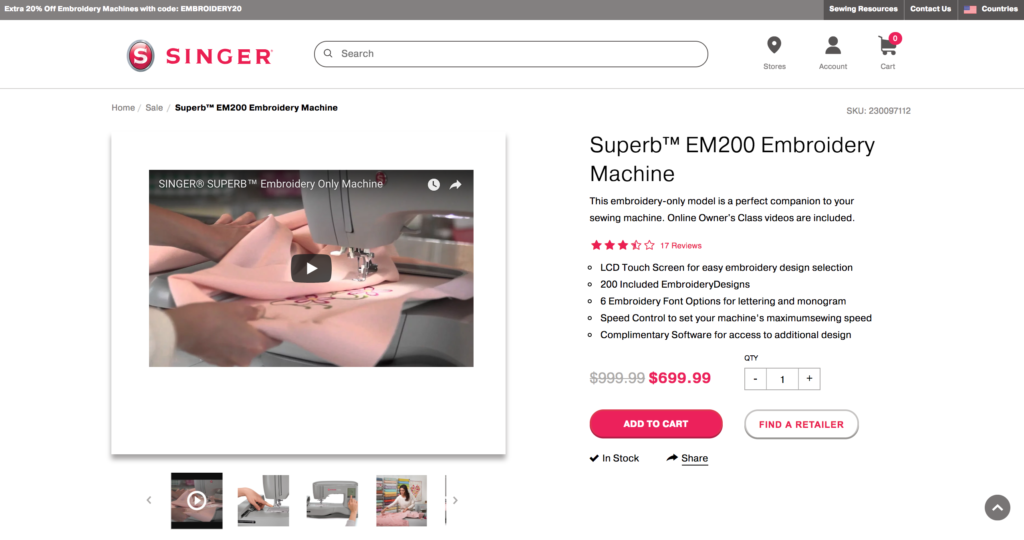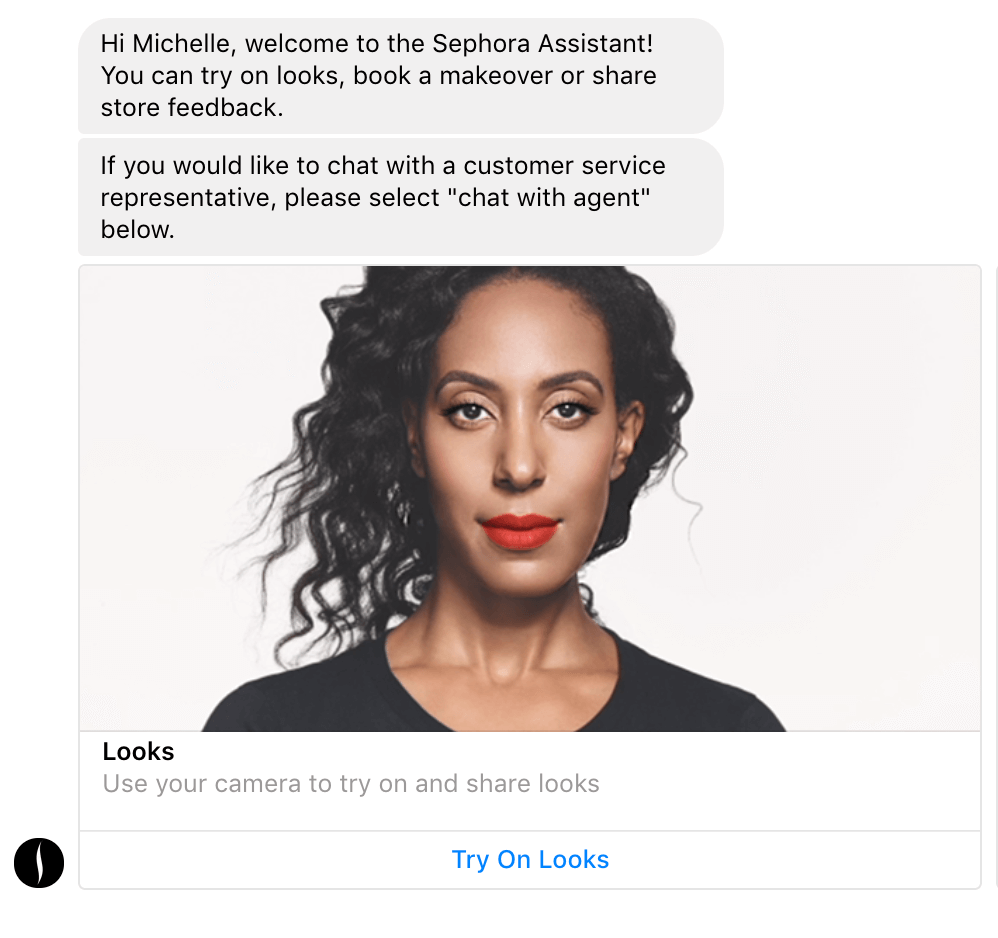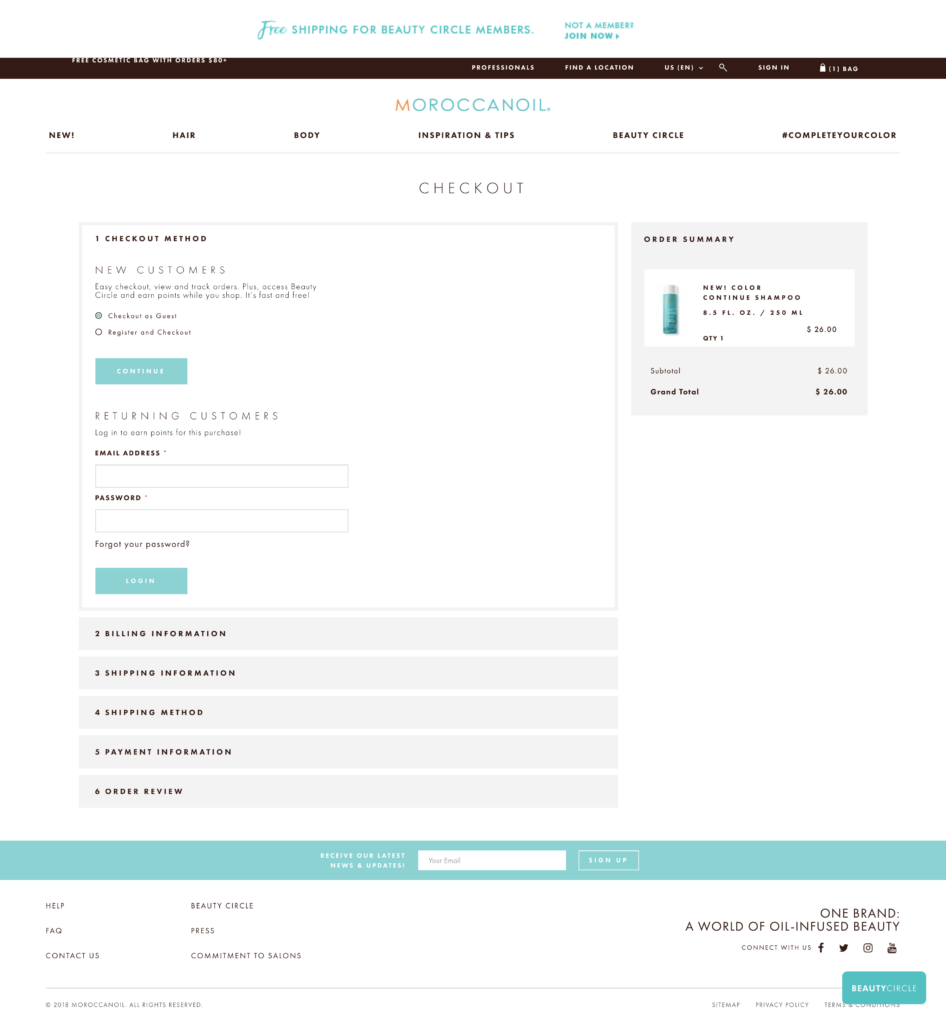It’s a great time to be a consumer. As eCommerce experiences staggering growth — reaching $2.3 trillion in 2017 alone — brands are increasingly motivated to find new ways to cut through the noise of a crowded industry and stay ahead of the competition. Since competing on price or product alone is becoming near impossible, savvy brands are turning their attention toward experiences that will win over customers and turn them into loyalists.
At the same time, emerging and updated technologies in the commerce space are changing the game for businesses. Brands are using the latest innovations to create that perfect customer experience. Here are three of the most important trends defining the next generation of shopper experiences on eCommerce sites.
Tech Trend #1: Enriching product pages and listings with multimedia
On average, 40% of Millennials and 47% of Gen Z say they use social “to find funny or entertaining content.” Given the ubiquity of social platforms, expectations for entertainment and rich, purposefully curated content now carry over to all online experiences, including brand discovery and shopping. Consumers anticipate an eCommerce journey that will keep them interested, even at the bottom of the sales funnel.
Product pages have historically housed specific information, like dimensions, colors, and price, but not much else. In the last few years, ratings and reviews became must-haves, but there are still a lot of brands neglecting to include any other types of content on these pages.
As consumers increasingly anticipate an in-person shopping experience online, assets like demonstration videos, customer photos, blog post snippets, or virtual try-on applications are becoming critical. These additions to product pages keep shoppers inspired and emotionally connected to a brand as they’re about to click the buy button (and beyond). In the coming years, the gap between content and commerce will continue to close until they are truly one and the same.
Interestingly, a brand founded in 1851 — Singer Sewing Machines — has been ahead of the curve when it comes to incorporating multimedia into their site. Their latest redesign places special emphasis on including rich media, such as instructional and demonstration videos, on product pages.
Instead of redirecting shoppers to YouTube, Singer ensures that customers can absorb detailed, technical product information while remaining engaged on site.

What’s more, Singer also added a tabbed search result feature that draws this content throughout the user journey. When a shopper searches for specific item, the query pulls up three different types of content divided into tabs: products tagged to the keyword, relevant blog posts and DIY project pages, and customer support pages. Surfacing this narrative content throughout the site keeps visitors inspired and engaged.
#1: Avoid sending shoppers to different pages or pop-ups. Ideally, videos and other rich media should play within the hosted page itself, without disrupting the user journey.
#2: Design with mobile in mind. The majority of your traffic is likely on mobile, so design modularly to ensure the media you’re showcasing delivers a stellar user experience on smartphones.
#3: Offer an item configurator if your products are customizable. This tool allows shoppers to create and actually see their own designs. You can also provide a gallery for inspiration, and encourage shoppers to share their creations on social.
Tech Trend #2: Chatting customers up with AI-powered bots
With live chat becoming the new standard for customer service, shoppers increasingly expect to find out what they want to know quickly and conveniently. AI chatbots offer the same convenience while allowing for quicker response times and a more consistent experience.
This is especially helpful for people who reach out to your customer service channels to receive basic information about shipping, tracking, returns, recent promotions, and more. Instead of relying on customer service agents, whose limited time would be better spent on more complex issues, eCommerce businesses are now beginning to rely on chatbots to handle these types of inquiries.
While commonplace customer service issues are a good place to start, conversational commerce technology is now sophisticated enough to be incorporated throughout the buyer journey.
Using data, including browsing preferences, AI-powered bots can send relevant recommendations to customers in real time, prompting them, for example, to choose a matching top for the pants they just added to their cart. Even past the point of purchase, bots can update shoppers on billing or shipping information and even entice them to return for repeat purchases.
Sephora has two bots for shoppers — one that answers questions and gives personalized suggestions for products and another that allows users to submit a selfie and test different cosmetic products on their own face.
 Taking these kinds of in-store experiences online in an easy-to-access, natural way creates a smoother path to purchase and builds a stronger bond between the customer and the brand.
Taking these kinds of in-store experiences online in an easy-to-access, natural way creates a smoother path to purchase and builds a stronger bond between the customer and the brand.
#1: Personalize your interactions. Messenger applications allow brands to interact with customers in a super intimate space typically reserved for friends and family. You have to respect that access by being personal and super relevant to each individual customer.
#2: Don’t overdo it. Message selectively and make sure that the cadence suits the customer’s behavior. Nothing is more annoying than an overeager bot.
#3: Offer access to a human. This is especially important for customer service bots. Sometimes people need to speak to a person. It shouldn’t be near-impossible for them to choose that option.
Tech Trend #3: Streamlining the checkout experience
Today’s consumers are low on time and attention. They’re constantly switching between devices, and they consider delays on mobile to be several times more stressful than waiting in line at a retail store. A multi-step checkout process that includes wait times for pages to load could easily kill a sale for the modern shopper.
Brands need to invest in setting up a single-page checkout experience to avoid drop-off at this critical point in the buyer journey. Advances in technology mean that eCommerce sites can now give customers a full view of the information they’ll need to provide immediately upon checkout. Avoiding surprises and wait times right off the bat is the surest way to avoid cart abandonment.

Moroccan Oil does an excellent job of streamlining their checkout process. Shoppers can enter all relevant information for the purchase, including their address and credit card information, on a single page, so there is no frustrating backtracking if a mistake is made.
#1: Skip the step before checkout. Instead of asking shoppers to register their email with your brand on a separate page, allow them to proceed directly to the checkout page. Include an opt-in box at checkout to give them a chance to register.
#2: Include images on the checkout page. Make sure shoppers can see what’s in their cart to avoid mistakes that lead to returns, like ordering the wrong color or size.
#3: Offer automatic freebies with the purchase. Pleasant surprises at checkout discourage customers from shopping around.
Conclusion
eCommerce sites are constantly evolving to keep up with shopper expectations. Media-rich product pages, smart chatbots, and a seamless checkout experience are just the beginning. As the in-store experience continually shifts online, it’s critical that brands stay ahead of emerging technologies that allow them to replicate the personalized, attentive service that shoppers are used to in the digital space.
BORN Group is an award-winning global digital agency with a core focus on creative, content and commerce.


